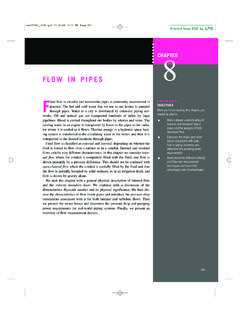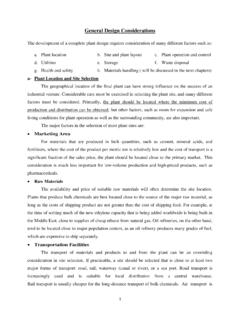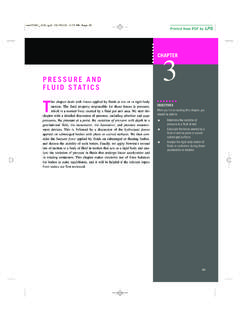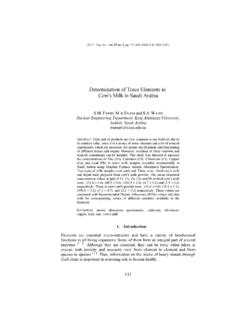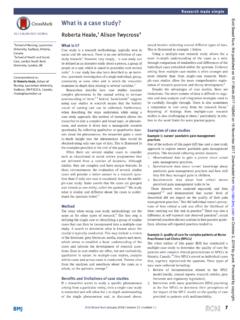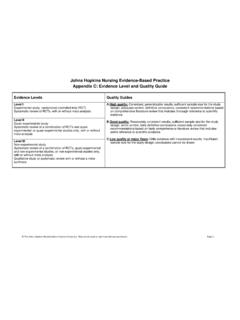Transcription of Selecting a Model for Evidence-Based Practice Changes
1 291 Selecting a Model for Evidence-BasedPractice ChangesA Practical ApproachAACN Advanced Critical CareVolume 19, Number 3, 300 2008, AACNAnna Gawlinski, DNSc, RN, FAANDana Rutledge, PhD, RNEvidence- based Practice models have beendeveloped to help nurses move evidence intopractice. Use of these models leads to an organ-ized approach to Evidence-Based Practice , pre-vents incomplete implementation, and canmaximize use of nursing time and one Model of Evidence-Based Practice ispresent that meets the needs of all nursing envi-ronments. This article outlines a systematicprocess that can be used by organizations toselect an Evidence-Based Practice Model thatbest meets the needs of their : Evidence-Based Practice models, Evidence-Based Practice , modelsABSTRACTF actors related to patient safety, quality, andevidence- based Practice (EBP) are drivingchanges in healthcare.
2 Nurses are interested inhow to move good evidence into Practice tooptimize patients outcomes; thus, nurses maybenefit from understanding more about EBPmodels. These models have been developed tohelp nurses conceptualize moving evidence intopractice. They can assist nurses in focusingefforts derived either from clinical problems orfrom good ideas toward actual implementa-tion in a specific Practice setting. Use of EBPmodels leads to systematic approaches to EBP,prevents incomplete implementation, promotestimely evaluation, and maximizes use of timeand article describes a systematic processfor organizations to use as a template forchoosing an EBP nursing Model .
3 Strategiesfor involving staff nurses and clinical andadministrative leaders are discussed. Finally,a summary of key EBP nursing models Structures or Forums for DiscussionsThe first step in Selecting a Model is to estab-lish a structure or a forum in which presenta-Anna Gawlinski is Director, Evidence-Based Practice , andAdjunct Professor, Ronald Reagan University of California, LosAngeles Medical Center & University of California, Los AngelesSchool of nursing , 757 Westwood Plaza, Los Angeles, CA90095 Rutledge is Professor, Department of nursing , CaliforniaState University Fullerton; and nursing Research Facilitator,Saint Joseph Hospital, Irvine, California. tions and discussions can occur about variousEBP models, their advantages and disadvan-tages, and their applicability to organizationalneeds.
4 Several possible strategies include: use of an existing nursing research commit-tee in which selection of an EBP Model isadded to annual goals and activities; formation of an EBP council, with an initialtask of Selecting an EBP Model ; appointment of a task force charged withselecting an EBP Model ; use of an educational event to increaseknowledge about EBP models while facili-tating the selection of a Model appropriatefor the organization; and use of a focus group process to select an EBPmodel consistent with the philosophy,vision, and mission of the 16/7/08 09:05 PM Page 291 GAWLINSKI AND RUTLEDGEAACN Advanced Critical Care292 Any of these strategies could help set thestage for an organization to choose an EBPmodel.
5 For example, the authors used anexisting nursing research committee/councilto begin the process of Selecting an EBP modelin 2 different settings. In a third hospital, amultidisciplinary EBP council took on thetask of Selecting an EBP Model . Regardless ofthe structure or the forum used, a thoughtfuland systematic process is of the Committee or the GroupThe second step to identifying an EBP Model isto carefully consider appropriate members ofthe committee or the group. Administrativeand clinical leaders such as nurse managers,clinical nurse specialists, and nurse educatorsshould be represented, as should interestedstaff nurses. Staff nurses who are clinicalresources in their units, share an interest inimproving patient care, or are curious aboutresearch are likely members.
6 The educationallevel of the committee members should reflectthat of nurses within the department or theinstitution and will most commonly includenurses with associate, bachelor s, and master sdegrees. In addition, members should repre-sent the various clinical units/departments orspecialties within the of persons with special expert-ise in research or EBP, such as a nurse researcheror faculty member from a local unit, hospital,or school of nursing , may be especially persons may be internal or external to theorganization and have valuable expertise inEBP nursing models. They can function asactive members or as consultants. A librarianmember may also be useful in retrieving neededpublications to evaluate selected evaluation process and the number ofEBP models that are considered can influencethe desirable number of committee example, at one institution (a universityacademic hospital), the nursing researchcouncil selected 7 EBP nursing models forreview and evaluation.
7 Table 1 lists the mod-els and shows the criteria used to evaluatethem. These 7 models were chosen for evalua-tion either because they were commonly men-tioned in publications about EBP nursingmodels or because they were identified bycommittee members. At another institution (acommunity hospital), the nursing researchcouncil selected 4 EBP nursing models to eval-uate on the basis of council members knowl-edge of the models utility and potential fitwith the of all committee members inthe evaluation process is vital. Using a processwhere 2 or 3 persons volunteer to review andpresent 1 to 2 EBP nursing models can get allmembers involved. Staff nurses can be pairedwith administrative or clinical leaders in teamsof 2 to 3 persons.
8 All committee members canthen participate in the process of evaluatingmodels by attending presentations about eachmodel and actively participating in discus-sions. By having small groups present eachmodel, the workload is divided among groupmembers. The more people involved in theprocess, the greater the need for coordinationand oversight by the the First MeetingOnce the group has been selected, the nextstep is to organize the first meeting so thatclear communication about the roles andresponsibilities of team members can chairperson or the leader can survey thegroup members to determine the optimal date,time, and comfortable location for this meet-ing.
9 Because of the nature of the workinvolved in Selecting a Model , 2 hours is anoptimal duration for meetings. An agendashould accompany the meeting invitations andinitially will include items such as discussionsof the purpose and goals of the committee andthe roles and responsibilities of committeemembers (Table 2). Providing a brief readingassignment that gives an overview of EBPmodels and should be completed before thefirst meeting is advisable. The chairperson canrequest committee members who are alreadyknowledgeable about EBP models to highlightparts of the reading assignment at the firstmeeting to promote discussion. The chairper-son should also collaborate with unit leadersto ensure that staff nurses have appropriaterelease time for and Responsibilities ofCommittee or MembersAt the first meeting, roles and responsibilitiesof the members for reviewing, presenting, andevaluating each EBP Model should beaddressed.
10 Assignments and due dates aredetermined to ensure steady progress. Forexample, a member can elect to work in asmall group to review the literature on an EBPAACN1903_291-300 16/7/08 09:05 PM Page 292 VOLUME 19 NUMBER 3 JULY SEPTEMBER 2008 Selecting A Model FOR EBP CHANGES293 Table 1: Evaluation Criteria and Scoring for 7 Models of Evidence-Based PracticeChangesaEvaluation Criteria for EBP ModelPurpose of Project: Evaluation and selection of an EBP Model for the nursing Department of RonaldReagan University of California, Los Angeles Medical Search, retrieve, and synthesize the current literature describing EBP models to help staff nurses useEBP concepts and apply them in clinical Recommend the adoption of a specific EBP Model for use by UCLA system:0 not present; 1 present/yes; 2 highly present/yesCriteriaModels1.
